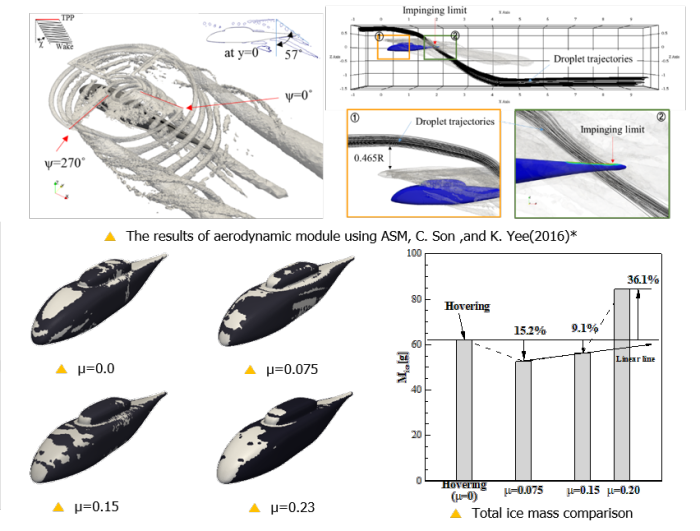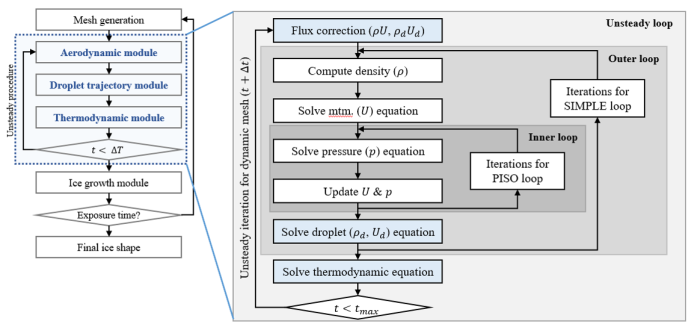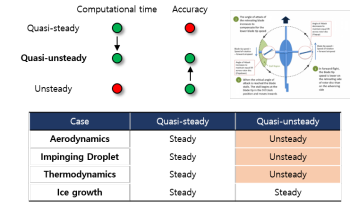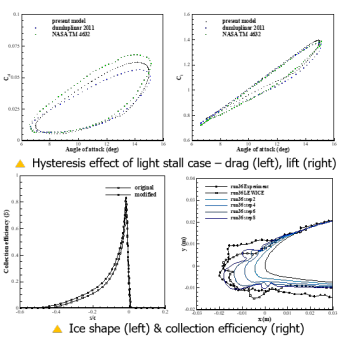Rotorcraft Icing
Rotorcraft Icing
Unsteadiness should be considered when analyzing the icing phenomenon on the moving body such as wind turbine, rotorcraft or UAM. However fully-unsteady numerical simulation requires huge computation resources to account both unsteady motion and ice growth on the surface. In an effort to alleviate computational cost in unsteady icing analysis, quasi-unsteady icing solver that combines the multi-step approach for ice shape growth with unsteady-icing solver is proposed. The quasi-unsteady approach results in more accurate ice shape prediction for 2D oscillating airfoil, and applied to 3D rotorcraft icing problem.



